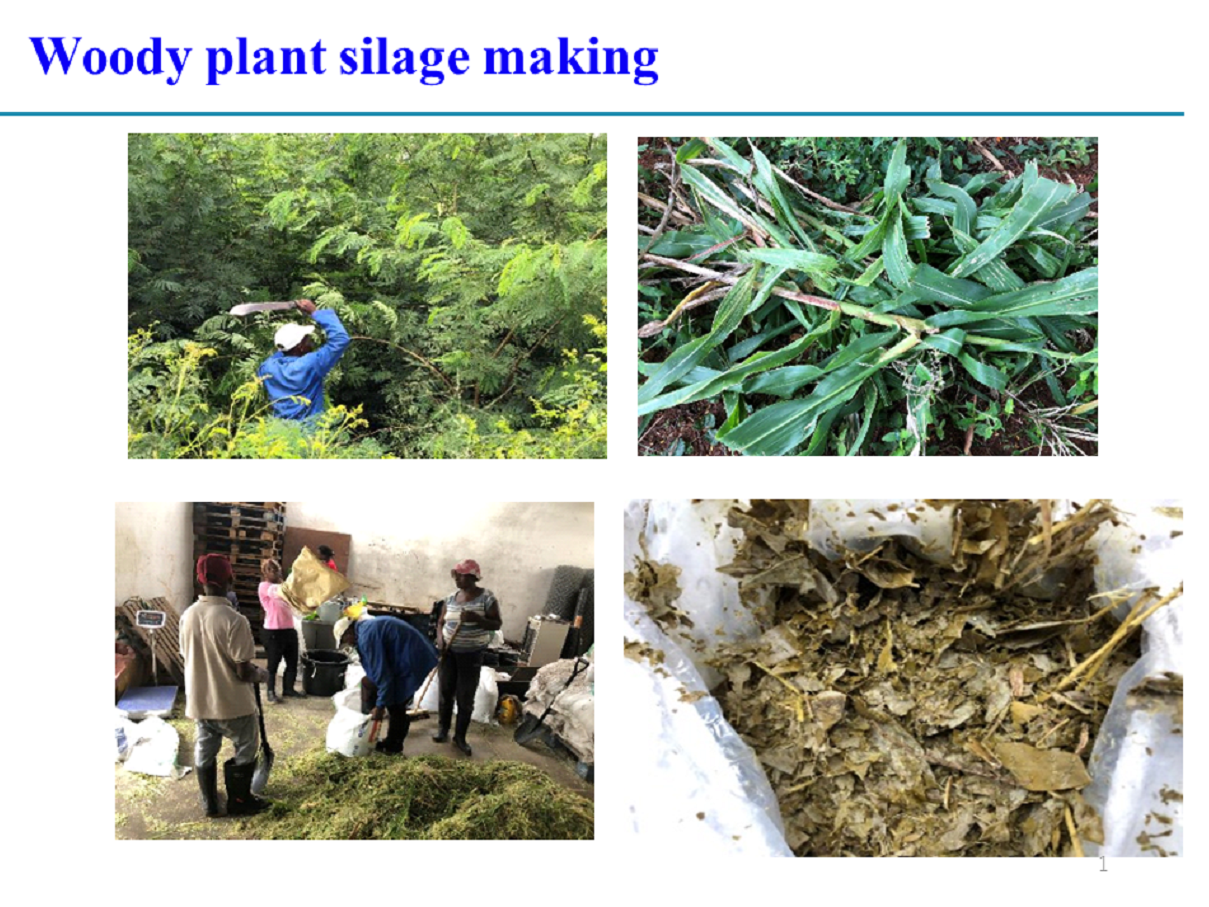Pick Up
507. Utilization of Nutrient-rich Leguminous Woody Plants to Improve Livestock Productivity in Southern Africa

As economies in developing countries and regions develop, there is a need to increase the supply of livestock products and improve people's lives. However, in southern Africa and other regions, ruminant milk and meat productivity declines due to a lack of feed production in both quality and quantity during the dry season. Therefore, JIRCAS, in collaboration with the Agricultural Research Institute of Mozambique (IIAM), has been conducting research on ruminant feeding management techniques that utilize locally available forage resources.
In the grazing lands of this region, the leguminous woody plants Gliricidia [Gliricidia sepium (Jacq.) Kunth ex Walp.] and Leucaena [Leucaena leucocephala (Lam.) de Wit] grow abundantly in the wild, and they are not defoliated even during the dry season, making them suitable for ruminant. The fresh branches and leaves of these woody legumes are used as natural feed for grazing cattle because they are rich in proteins, minerals and other nutrients, and are highly palatable to livestock, earning it the nickname “alfalfa tree”. On the other hand, their high moisture content and low soluble carbohydrate content are unsuitable for long-term storage in silage preparation.
Napier grass is widely grown, especially for dairy farming, due to its high biomass yield and suitability for growing in a wide range of soil types, fertility levels, and climatic conditions. The dried stem and leaves of corn, one of the region's representative crops, are often burned in the field, but if they are used as ruminant feed and returned to the soil as compost, a more effective nutrient cycle and arable-livestock linkage can be expected. Both are excellent sources of ruminant feed and rich in feed ingredients such as fiber and fermentation substrates for silage, but they are low in moisture content and cannot meet the nutritional requirements of livestock in terms of protein and other nutrients on their own.
Therefore, silages were prepared mainly from fresh leaf and branch of the above leguminous woody plants, with the addition of Napier grass or corn stover. Then the fermentation quality was evaluated and the associated microbial community was characterized by PacBio Single-Molecule Real-Time (SMRT) sequencing technology. The results showed that woody silage mixed with corn stover was prepared with higher quality and improved its microbial community and metabolic pathways during the fermentation process compared to woody silage alone or Napier grass mixture. Therefore, the combination of legume woody plants and corn stover can be used to prepare high-quality silage, which is expected to improve livestock productivity as well as more effective nutrient cycling and arable-livestock linkages in southern Africa.
These results were published in Frontiers in Microbiology, an international journal of microbiology, as Microbial Co-occurrence Network and Fermentation Information of Natural Woody-Plant Silage Prepared with Grass and Crop by-product in Southern Africa.
References
Du Z, Yamasaki S, Oya T, Nguluve D, Euridse D, Tinga B, Macome F and Cai Y (2022) Microbial Co-occurrence Network and Fermentation Information of Natural Woody-Plant Silage Prepared With Grass and Crop By-Product in Southern Africa. Front. Microbiol. 13:756209.
doi: 10.3389/fmicb.2022.756209
Du Z., L.Sun, C.Chen, J.Lin, F.Yang, Y.Cai (2020) Exploring microbial community structure and metabolic gene clusters during silage fermentation of paper mulberry, a high-protein woody plant. Animal Feed Science and Technology.
https://doi.org/10.1016/j.anifeedsci.2020.114766
IPCC (2022) https://www.ipcc.ch/report/ar6/wg2/downloads/report/IPCC_AR6_WGII_Final…
Pick up 487. IPCC - The Need for Climate Resilient Development
https://www.jircas.go.jp/en/program/proc/blog/20220301
Contributors: CAI Yimin, OYA Tetsuji, YAMASAKI Seishi (Crop, livestock and Environment Division)
